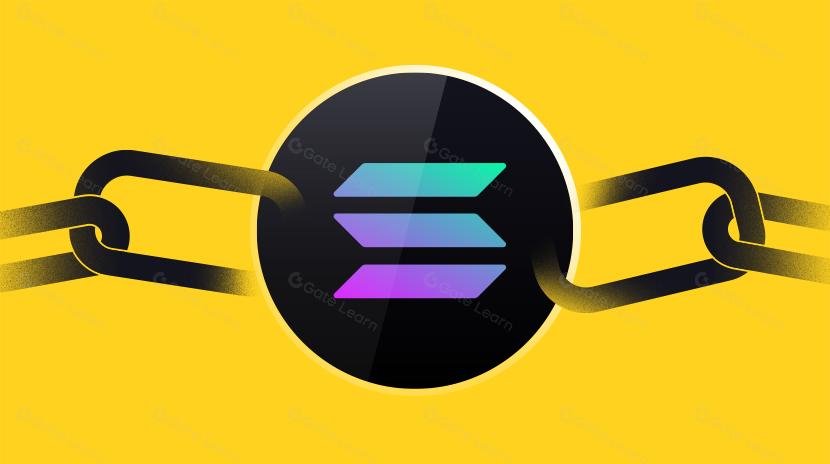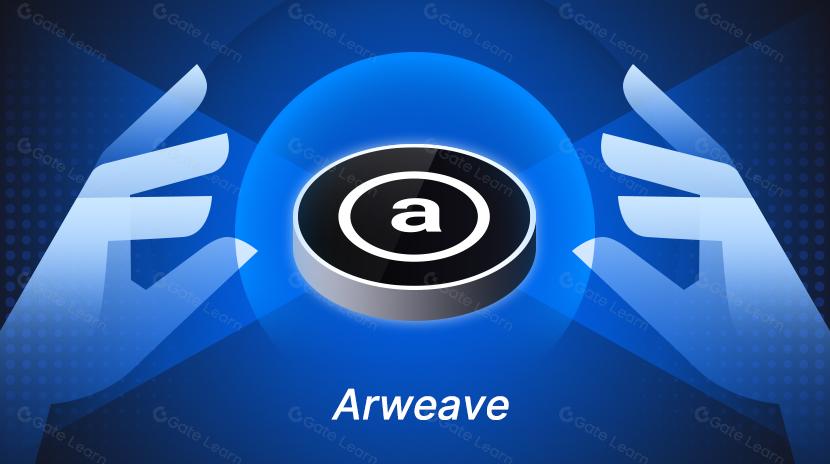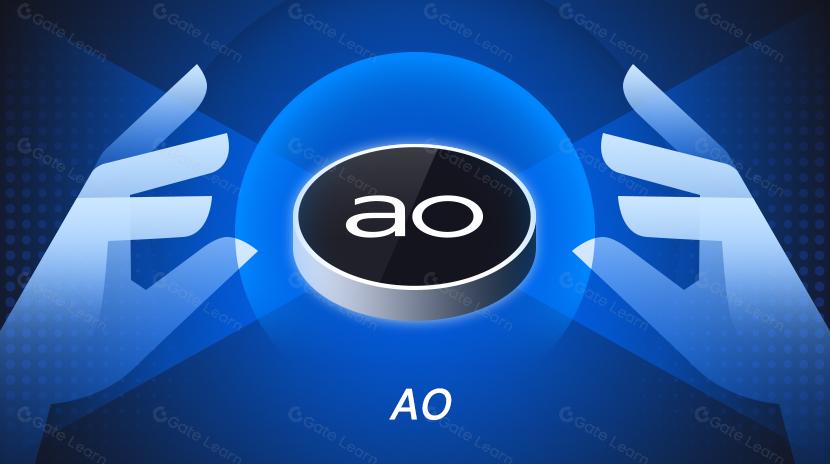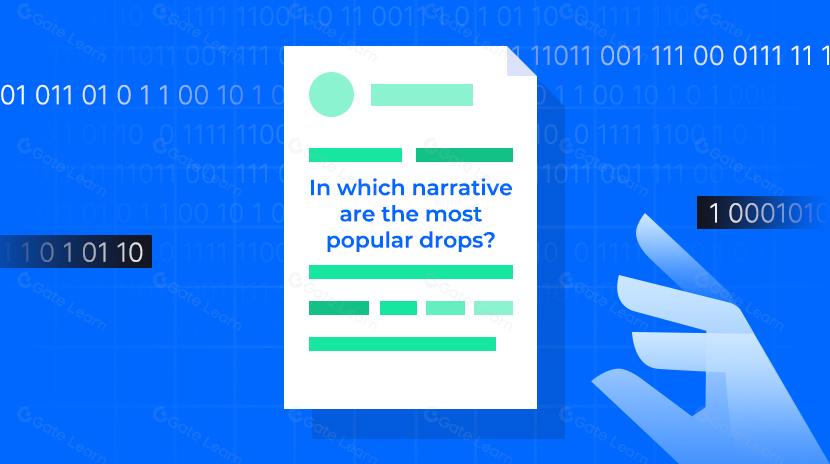什麼是 Shadow Exchange?
Shadow Exchange 是一個在 Sonic 區塊鏈上原生構建的去中心化交易所,專爲加密貨幣初學者和中級用戶設計。它採用集中流動性方法,將流動性集中在特定價格範圍內,以提高交易效率和降低滑點。平台特色包括 x(3,3) 激勵系統、xShadow 質押機制和 PvP 重基準機制,通過 Sonic 的高速網絡實現快速低成本交易。Shadow Exchange 通過其創新的代幣經濟學和治理特性,爲用戶提供全面的 DeFi 交易和收益機會。Sonic 區塊鏈是與 EVM 兼容的第一層區塊鏈,因其速度和稱爲費用貨幣化 (FeeM) 的獨特功能而脫穎而出。Sonic 每秒可處理超過 400,000 筆交易 (TPS),確認時間爲亞秒級,比許多其他 EVM 區塊鏈快得多。FeeM(Fee Monetization,費用貨幣化)是一種新的經濟機制,開發者可以從他們構建的應用程序中賺取 90% 的費用,只要這些應用程序增加了網絡上的活動。
Shadow Exchange 是在 Sonic 區塊鏈上原生構建的去中心化交易所(DEX)。它採用訂單式集中流動性方法,將流動性集中在特定的價格範圍內,以提高交易效率。Shadow Exchange 旨在通過提供優化的流動性管理、減少滑點和高效的交易環境,提升用戶的交易體驗。
什麼是 Shadow Exchange?

Shadow Exchange 是由名爲 24dollars 的開發者於 2024 年在 Sonic 區塊鏈上原生構建的去中心化交易所(DEX)。 它專爲加密貨幣初學者和中級用戶量身定制,提供了一個在Sonic區塊鏈上交換代幣、提供流動性和賺取獎勵的平台。與一般的交易所不同,Shadow Exchange 使用 Sonic 的高速網絡,以較低的成本在幾秒鍾內處理交易。它與 Uniswap v3/v4 類似,側重於集中的流動性,但針對 Sonic 的高吞吐量和低成本進行了優化,將流動性集中在特定的價格範圍內,以減少交易者的滑點,提高提供商的回報。
Sonic 交易所 的主要特點
- x(3,3) 激勵:這個獎勵系統建立在較早的 ve(3,3) 模型之上。它允許用戶通過對流動性池進行質押和投票來賺取代幣,而無需強制長時間鎖定。該系統非常靈活,鼓勵用戶積極參與。
- xShadow:以 1:1 的比例轉換 SHADOW 後獲得的特殊代幣。持有 xShadow 可以獲得 100% 的協議費、投票獎勵和提前退出的懲罰。它是管理和獎勵分配的核心。
- PvP 重基準機制:這是一種獨特的設計,用於保護質押者、獎勵忠誠用戶,並維持系統穩定。如果有人提前退出 xShadow,他們最多會失去50%的代幣,這部分代幣將分配給仍在質押的用戶。
- 集中流動性:”影子” 不會將流動性分散到所有價格上,而是將其集中在特定範圍內。這減少了交易者的滑點,提高了流動性提供者的收益。
- 競爭性收益耕作:流動性提供者可通過在活躍池中下注賺取高額年收益率(APY)。有些池提供超過 70% 的年收益率,對尋求收益者很有吸引力。
- 主動質押:要賺取手續費或回扣等獎勵,您需要質押 xShadow 並投票。被動持有是不夠的,主動參與才是關鍵。
- 動態費用:費用根據市場情況進行調整。交易量大的貨幣對可能會向提供者收取更高的費用,而新的貨幣對則會收取較低的費用,並提供更多代幣獎勵,以吸引流動性。
- 流動質押:通過 x(3,3)——xShadow 的流動版本,您可以在質押的同時繼續交易您的資產。它起初與 xShadow 以1:1的比例掛鉤,但隨着獎勵的累積,其價值會逐步增長,既提供靈活性,又不會逃避懲罰機制。
- Feeshare:Sonic 的費用貨幣化 (FeeM) 將 90% 的天然氣費用返還給用戶或開發者。Shadow 利用這一點降低交易成本,提升交易者和供應商的體驗。
Shadow Exchange 的核心概念

x(3,3)
x(3,3) 是 Sonic 區塊鏈上 Shadow Exchange 的核心激勵機制,是由 Solidly 首創的 ve(3,3) 模型的進化版本。它允許用戶質押代幣並對流動性池進行投票,以引導代幣的釋放(Token Emissions),從而在每個周期(Epoch)結束時,根據其質押數量和投票權重獲得相應獎勵。與 ve(3,3) 通常要求鎖倉數月甚至數年以最大化收益不同,x(3,3) 取消了強制性的長期鎖倉要求,爲短期參與者提供了更高的靈活性。這種設計非常適合那些追求靈活性而非長期鎖定的活躍交易者和流動性提供者。
具體流程是通過質押 xShadow 或平台治理代幣 $x33 來實現的。用戶質押代幣並對流動性池進行投票,以決定代幣釋放的方向,在每個周期中獲取獎勵,而無需強制長期鎖定。被質押並投向某個池的 xShadow 或 $x33 越多,該池獲得的釋放份額就越高,從而激勵用戶通過策略性投票提高回報。獎勵來源包括協議費用和代幣釋放,具體收益與池子的表現和投票總量掛鉤。這一機制區別於 ve(3,3) 偏向長期持有者的模式,更注重對活躍參與者的獎勵,而非僅靠被動鎖倉。
xShadow
xShadow 是 Shadow Exchange 上不可轉讓的質押與治理代幣,是其獎勵與治理系統的核心支柱。xShadow 通過將 SHADOW 轉換或質押獎勵獲得,無法在公開市場上購買,確保獎勵僅發放給活躍參與者。用戶可選擇將 SHADOW 鎖定 15 至 180 天不等的歸屬期,從而獲得協議費用分成、投票激勵以及重基準(Rebase)獎勵的資格。在質押後的前 14 天內,用戶可選擇取消質押並獲得全額退款(按 1:1 比例返還 SHADOW)。若在質押滿 14 天後但未滿 180 天內退出,將面臨 50% 的懲罰性扣減,所扣除的 SHADOW 將通過 PvP 重基準機制重新分配給仍在質押的用戶。
xShadow 的用途
- 協議費用分成:質押者可按其 xShadow 持有比例,獲得 100% 來自交易所產生的協議費用收入。
- 投票激勵:xShadow 可用於在 x(3,3) 機制中對流動性池的權重進行投票,引導代幣釋放至用戶偏好的流動性池,投票權重越高,獲得的激勵越多。
- 治理與流動質押:xShadow 參與平台治理決策,並可轉換爲 $x33 用於流動質押,在保持獎勵資格的同時,提供更高的靈活性。
傳統流動性
傳統流動性(Legacy Liquidity) 是 Shadow Exchange 的經典流動性框架,借鑑了 Uniswap v2 的設計,用於支持 Sonic 區塊鏈上的代幣兌換與流動性提供。該機制包括兩種類型的流動性池:波動池與穩定池。波動池以等值的方式匹配代幣(例如 $50 的 Token A 與 $50 的 Token B),適用於價格波動較大的資產,如 ETH 或迷因幣。穩定池則針對高度相關的資產(如 USDC 與 USDT 等穩定幣)進行優化,使用經過調整的曲線以減少滑點並維持價格平穩,適用於低波動性的兌換場景。
這些池子依賴恆定乘積公式(x × y = k)運行,其中 x 和 y 是各代幣數量,k 爲常數。交易行爲會改變池中資產的平衡,從而動態調整兌換率與滑點,例如購買 Token A 會減少其供給,從而相對提高其對 Token B 的價格。套利機器人持續監控這些變化,並根據外部市場價格進行對沖交易來重新平衡池子,使匯率保持一致,而這一過程得益於 Sonic 鏈亞秒級的確認速度和極低的交易成本(平均手續費僅爲 $0.001)。
集中流動性
集中流動性(Concentrated Liquidity) 是 Shadow Exchange 交易與流動性提供系統的核心機制,基於 Ramses V3 Core 構建——這是對 Uniswap V3 的改進版本,並專爲 Sonic 區塊鏈的高性能環境所優化。該模型不同於傳統流動性中覆蓋整個價格區間的做法,它允許流動性提供者將代幣集中分配在特定的價格區間內,例如將 ETH-USDC 配置在 $2,000 到 $2,500 之間,而非全範圍(從 0 到無窮大)。這種精確定位的方法最大化了資本效率,確保流動性只在有交易需求的價格範圍內生效,從而減少交易滑點,並提升流動性提供者的手續費收益。
其運作機制是允許流動性提供者爲自己的頭寸設定上下限價格範圍。在該範圍內,流動性池基於調整過的恆定乘積公式(x × y = k)運作,但僅適用於所選區段。例如,當 ETH 的價格爲 $2,300 時,設定在 $2,000–$2,500 區間的頭寸將被完全利用,賺取高達 95% 的兌換手續費(通常爲每筆交易 0.3%);而設定在 $1,500–$1,900 區間的流動性則無法獲得收益,直到價格回落至該區間。每個頭寸會鑄造成不可替代代幣(NFT),由 Ramses V3 的帳戶系統單獨追蹤和管理,實現精細化控制。
Shadow Exchange 架構
流動性模型
該系統支持兩種流動性框架:
- 傳統流動性:基於 Uniswap v2,使用恆定乘積池(x × y = k)來支持波動性和穩定性資產對。波動性資產對按等值美元配對(如 $50 的 Token A 與 $50 的 Token B),而穩定資產對(如 USDC-USDT)採用更緊密的價格曲線,以適配價格高度相關的資產。流動性覆蓋整個價格區間,由套利機器人進行管理,95% 的交易手續費(通常爲 0.3%)分配給流動性提供者。
- 集中流動性:基於 Ramses V3 Core(即 Uniswap V3 的衍生版本)構建,允許用戶將流動性集中在指定價格區間內(如 ETH-USDC 的 $2,000–$2,500)。頭寸以 NFT 形式進行追蹤,借助 Sonic 區塊鏈的高速性能實現快速調整。手續費僅在活躍價格區間內產生,顯著提高資本效率並降低滑點,其中 95% 同樣分配給流動性提供者。
激勵和獎勵機制
x(3,3) 機制推動代幣釋放,以靈活的質押與投票方式取代 ve(3,3) 的長期鎖倉。用戶可質押 xShadow(按 1:1 比例轉換自 SHADOW,質押期爲 15–180 天)或 $x33(流動質押版本),用於對流動性池的權重進行投票,引導每個周期(每周刷新,協調世界時周四 00:00)的代幣釋放。獎勵包括:
- 協議費用:100% 的交易手續費按質押比例分配給 xShadow 質押者。
- 投票激勵:代幣釋放與投票權重掛鉤,推動活躍池的收益增長。
- PvP 重基準機制:xShadow 在質押滿 14 天但未滿 180 天提前退出的用戶,將承擔 50% 懲罰,該部分將於周期結束後重新分配給剩餘質押者,以維持系統穩定。
智能合約基礎設施
影子交易所運行於經審計的智能合約之上,源自 Solidly,並通過 Ramses V3 Core 進行增強。主要功能包括:
- 流動性池管理:支持傳統與集中流動性池,追蹤代幣餘額與手續費。
- 手續費分配:95% 的兌換手續費分配給流動性提供者,5% 用於平台運維;FeeM 機制可返還 90% 的 Gas 成本。
- 治理機制:xShadow 投票可調整代幣釋放方向及平台參數,所有操作鏈上執行。
- 重基準邏輯:負責處罰份額的再分配,保障長期質押者權益不被稀釋。
Sonic 集成
Sonic 的基礎架構——亞秒級區塊時間、高 TPS 以及低交易成本——爲整個系統提供強大支撐。FeeM 機制返還 90% 的 Gas 費用給用戶或開發者,使高頻交易與頭寸調整無成本壓力,支持集中流動性的快速配置以及傳統流動性的套利效率,從而推動整體交易量增長。
設計原則
影子交易所構建於 Solidly 的 ve(3,3) 模型和 Ramses V3 優化基礎上,在靈活性(短期質押)與效率(集中價格區間)之間實現平衡。所有系統通過審計保障安全,並借助 Sonic 的高速能力提升整體性能,使其成爲可擴展的 DeFi 引擎,當前已支持超過 457 個流動性池。
如何開始使用 Shadow Exchange
設置錢包
安裝 MetaMask 或 Rabby 等兼容錢包。使用 RPC 詳情爲 Sonic 網絡進行配置:
網絡名稱:Sonic
RPC URL: https://rpc.soniclabs.com
鏈 ID:64165
符號:S
Explorer: https://explorer.soniclabs.com
獲得 Sonic 代幣 ($S)
在 Gate.com 上購買 $S 代幣,然後提取到您的錢包。
訪問影子交易所

使用https://www.shadow.so 或https://www.shadowdex.fi 訪問影子交易所界面。點擊 “連接錢包”,選擇 MetaMask 或 Rabby,然後批準連接,即可連接錢包。同時,確保網絡設置爲 Sonic。
交換代幣

導航至 “交換 “選項卡。選擇輸入代幣(如 $ETH)和輸出代幣(如 $USDC),輸入金額並查看滑點設置(默認 0.5%)。如果出現提示,請批準代幣,然後確認交換。Sonic 的亞秒級完成度可立即處理。
提供流動性

轉到 “池 “選項卡。選擇一個貨幣對(例如,$ETH-$USDC),然後選擇 “傳統 “或 “集中流動性”。對於傳統流動性,輸入相等的美元值(例如,50 美元以太坊,50 美元USDC),批準並存入。對於集中流動性,請設置價格範圍(如 2,000 美元至 2,500 美元),存入資金,並爲頭寸 NFT 鑄幣。
質押賺取獎勵

在“質押”標籤頁下,將 $SHADOW 按 1:1 比例轉換爲 xShadow。選擇質押歸屬期(15 至 180 天),進行授權並鎖倉。通過 x(3,3) 對流動性池權重進行投票,引導代幣釋放,賺取手續費與重基準獎勵。或者,也可將 xShadow 兌換爲 $x33 進行流動質押,以保留交易流動性。
監控與管理

在 “My Pools” 中查看流動性頭寸(LP 手續費),或在 “Staking(質押)” 頁面查看 xShadow 獎勵。每個周期結束後(協調世界時周四 00:00),可領取手續費與釋放獎勵。xShadow 質押滿 180 天後可全額贖回;若在 14 天寬限期後、180 天前退出,將承擔 50% 的懲罰。
代幣經濟模型

$SHADOW 是影子交易所的功能型代幣,總供應量上限爲 1,000 萬枚。初始分配結構如下:貢獻者(750,000 枚)、預售(750,000 枚)、流動性激勵(3,500,000 枚)、空投(500,000 枚)、團隊(1,500,000 枚,分兩年線性釋放)、金庫(3,000,000 枚)。代幣釋放初始爲每周 50,000 枚 $SHADOW,並以每周 1% 的速率遞減,從而激勵用戶早期參與。
代幣功能與治理特性
$SHADOW 擔任多重角色:
- 手續費產生:交易手續費(如每筆兌換 0.3%,其中 95% 分配給流動性提供者)爲生態系統提供資金支持;xShadow 質押者在每個周期結束後(協調世界時周四 00:00)可領取 100% 的協議手續費收入。
- 質押與獎勵:用戶可將 $SHADOW 以 1:1 比例轉換爲 xShadow(質押期 15–180 天),參與 x(3,3) 機制進行投票,引導代幣釋放方向。質押獎勵包括協議費用、投票激勵以及 PvP 重基準機制(提前退出者將被扣除 50%,該部分重新分配給質押者)。
- 治理權利:xShadow 持有者可對流動性池權重及平台參數進行投票,影響釋放分配與戰略方向。通過 $x33 進行流動質押則在保留投票權的同時提供可交易性。
- 流動性激勵:共分配 350 萬枚 $SHADOW 用於流動性池,支持高收益率的流動性挖礦(年化收益率可超 70%),並促進交易量啓動。
代幣釋放與歸屬機制
$SHADOW 的代幣釋放機制以每周 1% 的速率遞減,初始每周釋放 50,000 枚,旨在平衡通脹並鼓勵可持續發展。團隊代幣將在兩年內線性歸屬,確保團隊與平台長遠利益一致。xShadow 的歸屬期爲 15–180 天,其中前 14 天爲無懲罰退出期,14 天後但未滿 180 天退出將扣除 50% 作爲懲罰,鼓勵用戶長期參與。總供應上限爲 1,000 萬枚,隨着採用率提升將進一步強化稀缺性,目前流通量反映平台處於早期階段。
結論
影子交易所(Shadow Exchange)於 2024 年上線於 Sonic 區塊鏈,是一個功能強大且用戶友好的去中心化交易平台,適合加密新手與中階用戶。它通過 Sonic 的費用貨幣化(Fee Monetization)機制實現高速低成本交易,系統架構兼顧效率、靈活性與激勵機制。$SHADOW 代幣的 1,000 萬總量上限與遞減釋放機制確保了其經濟模型的可持續性。從基礎兌換到高階收益挖礦,影子交易所提供適配不同用戶層級的工具,並通過已審計的智能合約與 Sonic 的強大基礎設施加持,構建出穩健的 DeFi 平台。
相關文章

Solana需要 L2 和應用程式鏈?

Sui:使用者如何利用其速度、安全性和可擴充性?

Arweave:用AO電腦捕捉市場機會

即將到來的AO代幣:可能是鏈上AI代理的終極解決方案

錯誤的鉻擴展程式竊取分析


